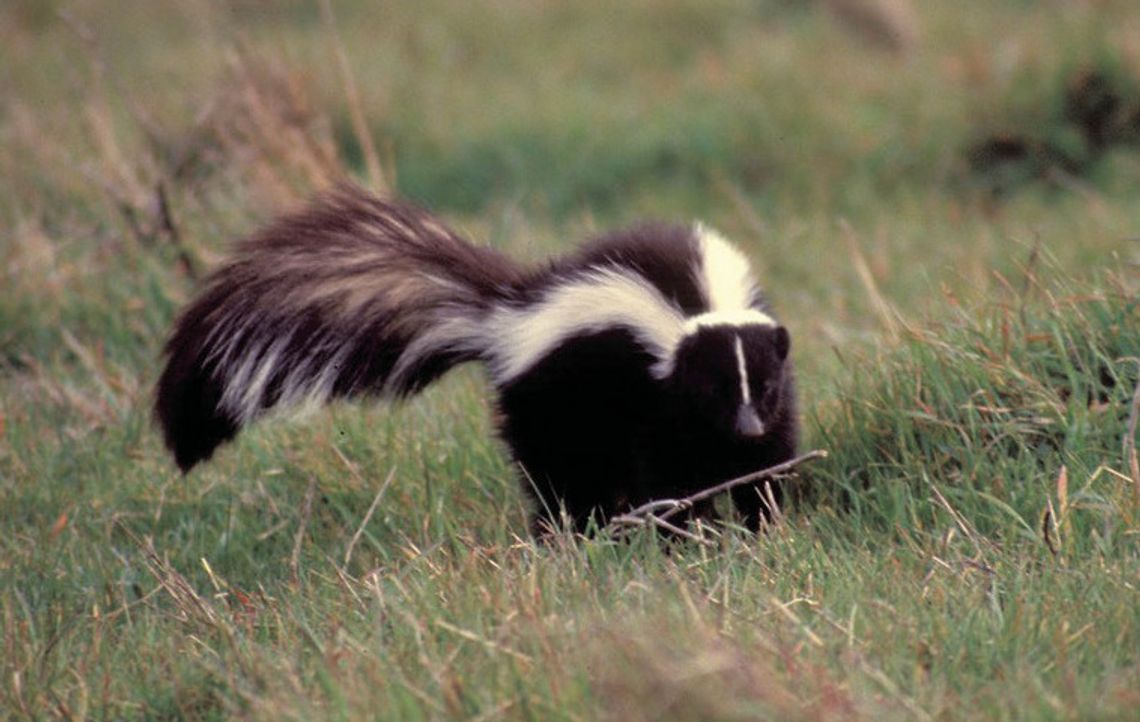Many times, animals are heard before they are seen. Many bird and amphibian observations begin with the hearing of the animal before it is actually seen.
But there is one animal who is more often smelled before it is seen, and it is a common denizen of Texas. The Striped Skunk (Mephitis mephitis) can be observed in every county of this state, and it appears that it is no more prevalent in any particular eco-region more than another.
Outside of Texas it occurs in every state of the U.S. and can be seen in all habitats other than the top of the Rocky Mountains.
Its natural range extends northward into southern Canada and southward into extreme northern Mexico (primarily Chihuahua, Coahuila, and Nuevo Leon). It thrives in a multitude of habitats varying from desert scrub to densely forested areas to grasslands and prairies.
It does seem to prefer to den among densely vegetated rocky crevices near streams.
Striped skunks are medium sized mammals that have a maximum body length of just under two feet, although most specimens are a tad smaller.
Like many mammals in this region, the males are the larger sex. The body is black and there are two white stripes that run lengthwise down the body to the tail. These stripes are connected in the neck region, and they can be of varying widths. The long and bushy ten-inch tail is colored and patterned similarly to the body. The head is typically all black, save for a narrow stripe of white fur along the midline. The small eyes are coal black. Each foot has five toes; the front ones have long claws that are utilized for foraging for food.
Besides the distinguishing coloration characteristics, this mammalian species is more widely known for its pungent smell. This stench, most often used as a last resort defensive strategy, is produced from two large scent glands on either side of the anus.
Anyone who has had the opportunity to smell this odor up close, whether it be man or animal, is certain to not want to do it again!
Striped Skunks, like the other five species of skunks found in Texas, are almost exclusively nocturnal. It often is active throughout the entire night, retiring to its den just before the dawn’s first light appears. It is omnivorous, feeding on both plant and animal matter.
Insects make up the vast majority of its prey, although smaller mammals (such as mice and baby rabbits), ground-nestling birds and eggs, and even reptiles are consumed regularly. Many times, this species will gorge itself preparing for the winter months. During the warmer times of the year, adults may only weigh as little as four pounds, but during the colder winter times of the year they can attain weights of nearly fourteen pounds.
Skunks are highly social animals, many living in groups of five to ten individuals. Oftentimes, the group is actually a family, consisting of a male, female, and their offspring.
Breeding occurs in the spring, and the gestation period lasts between eight and ten weeks. The three to nine young (average of five) are similar in appearance to the adults, save for much shorter hair, closed eyes, and closed ear canals. Their eyes and ears open after just one month, and they young are able to defend themselves by “spraying” by six weeks. Weaning occurs at about two months of age, and they remain with the family group until early fall.
Striped Skunks are rarely attacked by other animals. In fact, automobiles are probably one of, if not the, main cause of mortality in wild skunks. Few skunks live more than two years in the wild. Skunks are occasionally harvested for its pelt, but low values have kept it from being significant in fur production. Populations of this “stinky” mammal in Texas are quite stable, and unlike the other four species of skunk in the stare, it has adapted to human encroachment quite well.





















